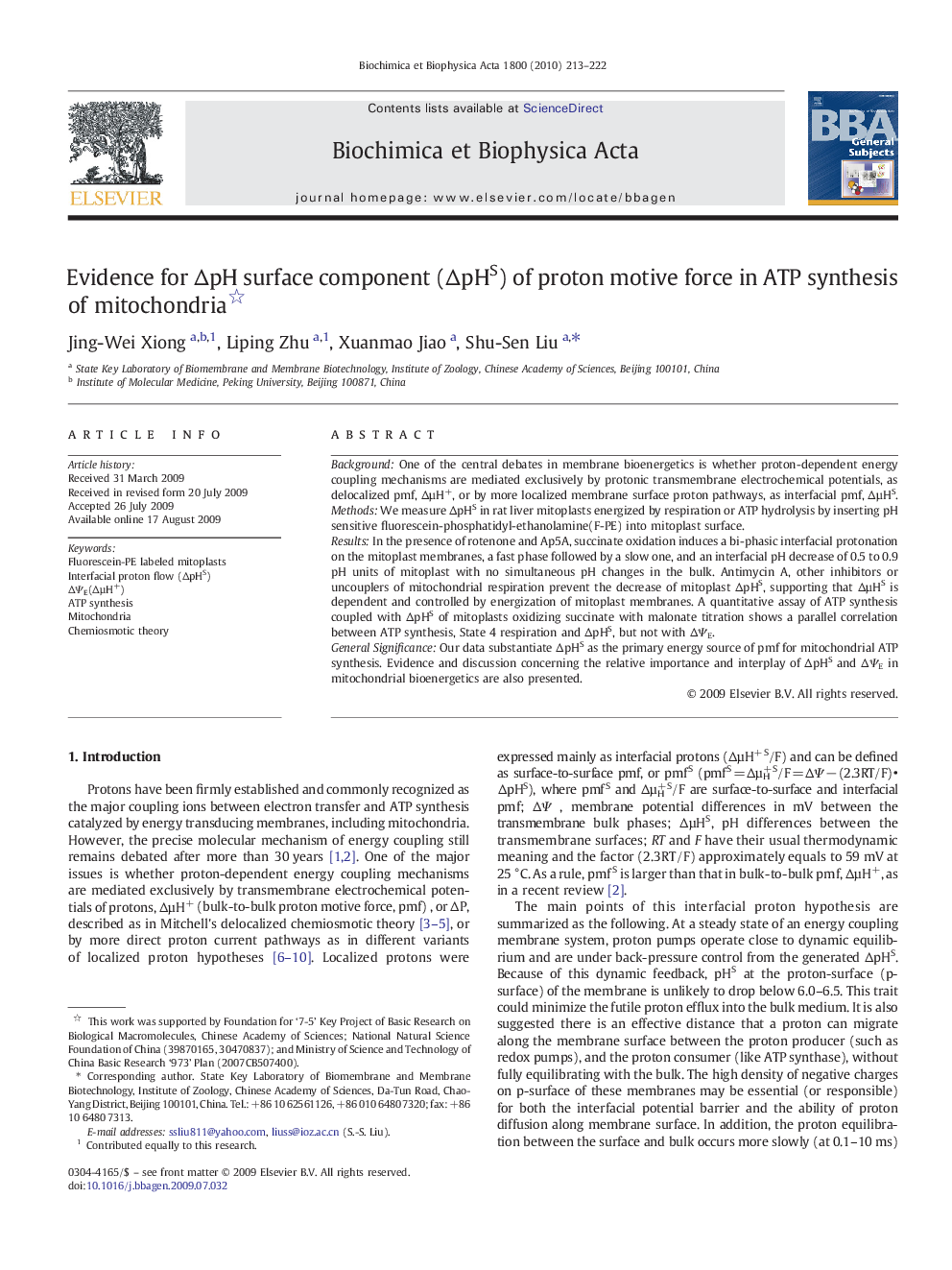| Article ID | Journal | Published Year | Pages | File Type |
|---|---|---|---|---|
| 1948118 | Biochimica et Biophysica Acta (BBA) - General Subjects | 2010 | 10 Pages |
BackgroundOne of the central debates in membrane bioenergetics is whether proton-dependent energy coupling mechanisms are mediated exclusively by protonic transmembrane electrochemical potentials, as delocalized pmf, ΔµH+, or by more localized membrane surface proton pathways, as interfacial pmf, ΔµHS.MethodsWe measure ∆pHS in rat liver mitoplasts energized by respiration or ATP hydrolysis by inserting pH sensitive fluorescein-phosphatidyl-ethanolamine(F-PE) into mitoplast surface.ResultsIn the presence of rotenone and Ap5A, succinate oxidation induces a bi-phasic interfacial protonation on the mitoplast membranes, a fast phase followed by a slow one, and an interfacial pH decrease of 0.5 to 0.9 pH units of mitoplast with no simultaneous pH changes in the bulk. Antimycin A, other inhibitors or uncouplers of mitochondrial respiration prevent the decrease of mitoplast ∆pHS, supporting that ΔµHS is dependent and controlled by energization of mitoplast membranes. A quantitative assay of ATP synthesis coupled with ∆pHS of mitoplasts oxidizing succinate with malonate titration shows a parallel correlation between ATP synthesis, State 4 respiration and ∆pHS, but not with ∆ΨE.General SignificanceOur data substantiate ∆pHS as the primary energy source of pmf for mitochondrial ATP synthesis. Evidence and discussion concerning the relative importance and interplay of ∆pHS and ∆ΨE in mitochondrial bioenergetics are also presented.
